Over many years, MB has received frequent reports of overcrowding across Melbourne’s schools (e.g. here, here and here).
The story is always similar: the acceleration in immigration, high-rise apartments and fringe housing developments are dramatically driving up student numbers, resulting in schools being crush-loading.
Forecasts frequently suggest that student numbers will balloon, thereby requiring the delivery of dozens of new schools, as well as the upgrading of existing schools.
For example, the Victorian Auditor General forecast that the state would require 50 new schools by 2021 for a projected 90,000 new students:
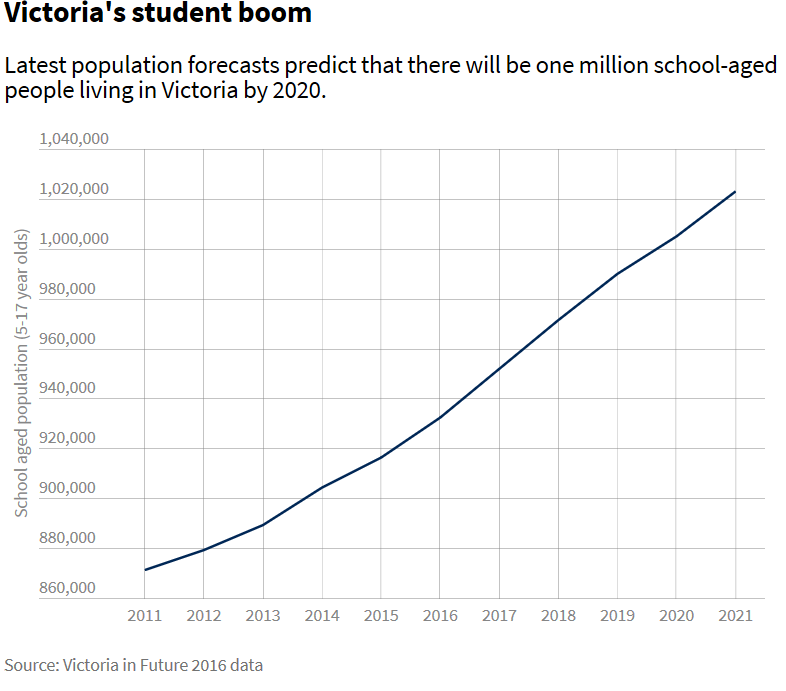
Similarly, Peter Goss at the Grattan Institute estimated that Victoria would require 220 new schools in the decade to 2026 to keep pace with student enrolments, with Melbourne’s inner-city most in need:
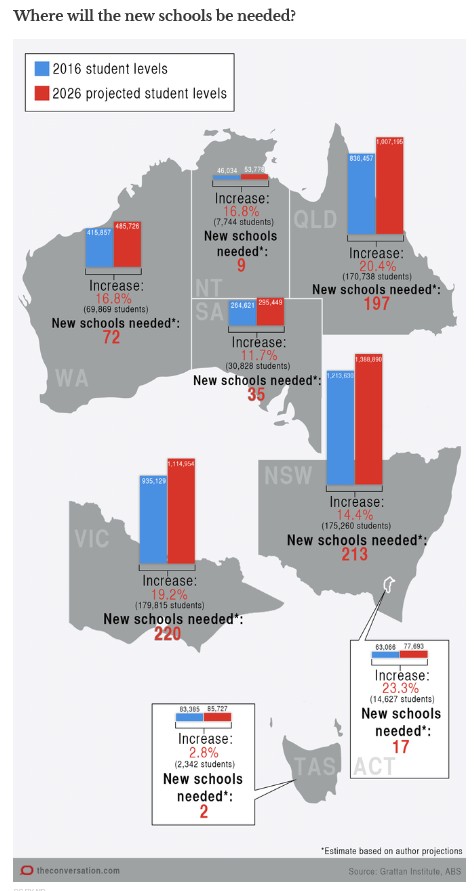
Today, we have received another warning, this time from the Victorian Education Department, which estimates that Victorian schools will have to squeeze in 25,000 more students than initially projected as enrolments soar at an unprecedented rate over the next five years. From The Age:
The Education Department has revised its enrolment figures and now anticipates that state, Catholic and independent schools will have to accommodate 115,000 extra students.
The new figures, obtained by The Age and based on updated Census data, eclipse previous projections of 90,000 additional students between 2018 and 2023…
Overcrowded schools are already rolling out three-storey portables, running classes in hallways and staggering lunch times…
Ms Podbury said schools would struggle to meet demand if enrolments continued to grow at such a pace…
The underlying driver of Victoria’s student boom is the federal government’s mass immigration ‘Big Australia’ policy:
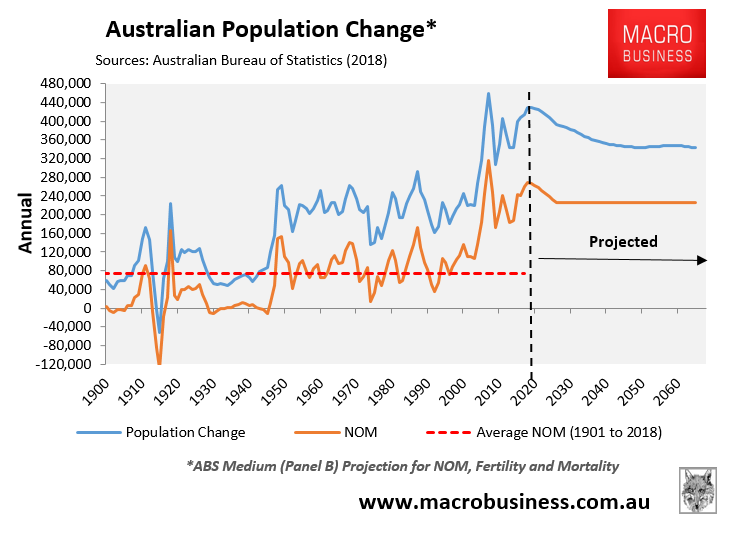
When I worked at the Victorian Treasury in 2006, the State Government had just released “Melbourne 2030”, which projected that the city’s population would reach 5 million people by 2030. In 2010, the Victorian Government released “Melbourne Beyond 5 million”, which projected that Melbourne would add one million people in 15 years and warned that the city was not ready for this growth.
Melbourne has already smashed those projections, hitting 5 million people last year, 12 years ahead of the projections in Melbourne 2030, after adding a whopping 590,000 people in just the five years to 2018. And Melbourne’s population is projected to double again to more than 10 million in just 48 years, according to the ABS:
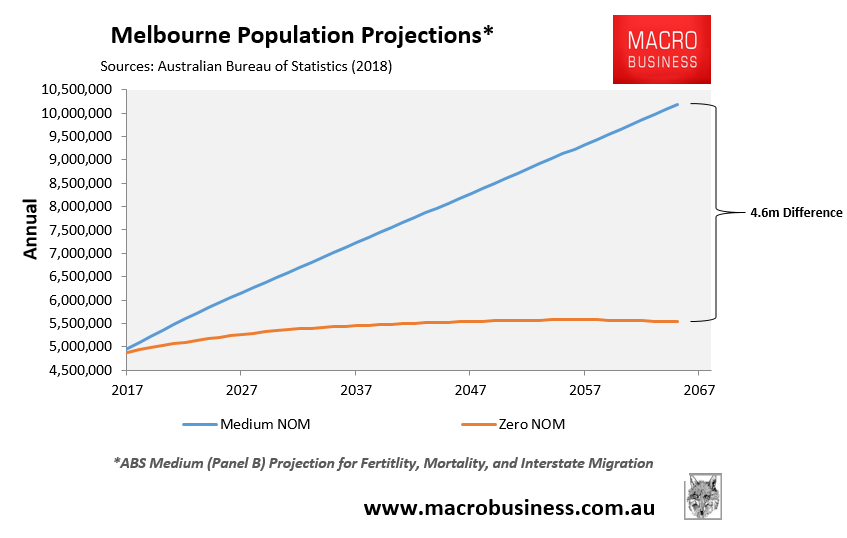
The crush-loading of schools and infrastructure is only going to worsen according to Infrastructure Australia’s modelling, which shows that as Melbourne’s population balloons to a projected 7.3 million people by 2046, traffic congestion and access to jobs, schools, hospitals and green space will all worsen significantly regardless of how the city is built-out:
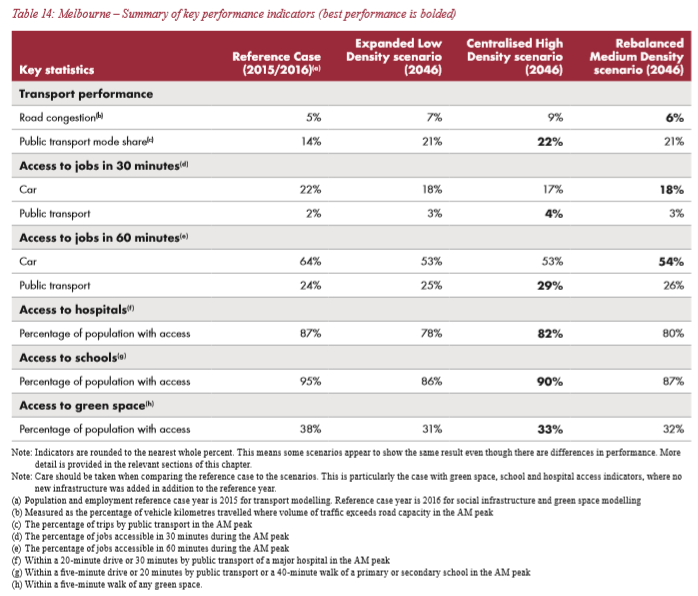
To add insult to injury, the Victorian Government wants to expand the number of international students at Victoria’s schools, which will unnecessarily exacerbate the overcrowding problems.
After it was revealed last month that Victorian schools are about to exceed the enrolment cap of 5,750 international students, Victoria’s education minister, James Merlino, announced he would seek to have the cap lifted:
Education Minister James Merlino said the limit being reached was “testament to the quality of our schools and the growing strength of Victoria’s students abroad”, and said he had sought urgent advice on how to ensure more students could be enrolled in 2020…
“I want to see more schools offering international student places, and more international students coming to Victoria,” Mr Merlino said…
“We will be working closely with schools and looking at how we can grow the number of international students and the number of international places.”
Given Victoria’s schools are already bursting at the seams, and enrolment numbers are projected to skyrocket, where is the sense in burdening Victoria’s schools with thousands more international students? Many Victorian schools are already way over-enrolled, and local children are missing-out on their school of choice.
Further, how will the Victorian Government ensure that education standards are maintained? As we have seen with Australia’s universities, the sharp increase in international student numbers has resulted in a dilution of standards as teachers have come under pressure to cater to international students at the expense of locals in order to keep the fees rolling in.
The Victorian Government is already failing to provide for local school students. So why exacerbate these problem by expanding the number of international students at Victoria’s schools?

